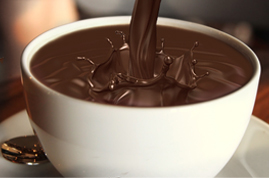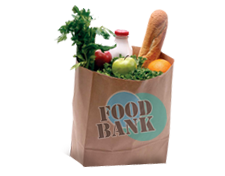Hot Chocolate Facts
EARLY HISTORY OF HOT CHOCOLATE
It has been generally recorded that the Mayans created the first chocolate drink approximately 2000 years ago. However, archeologists have discovered that the Olmecs, the oldest civilization of the Americas (1500-400 BC), were probably the first users of cacao. A Mayan tomb in Guatemala had vessels with the Mayan glyph for cacao. In fact, although chocolate was available to all of the Mayan social classes, the wealthy drank from elaborately decorated vessels. By 1400 Ad, the cocoa beverage was an essential part of the Aztec culture and has been popularized in Europe since being introduced from Mexico as “chocolat” – a combination of the terms choco (“foam”) and atl (“water”). Served cold, the Maya ground cocoa seedsinto a paste and mixed it with water, chili peppers, cornmeal and other ingredients.To form a thick foam, they poured the drink back and forth from a cup to a pot.
Today, what we now know as hot chocolate is consumed throughout the world and comes in many variations. These can range from the very thick consumed by Italians to the thinner hot cocoa consumed by North Americans. The Spaniards named their drink “chocolatl”, consisting of a chocolate base flavoring with vanilla and other spices added and was served cold. It is believed that the drink was served hot later in the 16th century and described as “xocolatl”. Unlike modern hot chocolate, the first chocolate drink tasted spicy and bitter not sweet, since sugar had not yet come to the Americas.
Made popular by the Spanish upper class, “chocolate” as it came to be known in the early 16th century, sweet tasting hot chocolate was invented. By the 17th century, it became somewhat of a luxury item among European nobility. In 1657, chocolate was very expensive and sold in establishments that are similar to modern coffee shops known as the Chocolate House.
North Americans were introduced to the drinking version of chocolate in the 17th century by the Dutch. These first time colonists began selling hot chocolate around 1755.
Traditionally, hot chocolate is associated with cold weather, winter and as a dessert. Today hot chocolate comes in two distinct variations. The one adopted by Canadians and Americans alike, is the popular and thinner variation in instant form generally made with hot water or milk from a packet or tin containing mostly cocoa powder, sugar and dry milk. This one is sweet and usually topped with marshmallows or whipped cream. The other variation is a thicker blend made up of semi-sweet chocolate, cinnamon, sugar and vanilla. Hot chocolate of this type is usually sold in circular or hexagonal tablets which are dissolved into hot milk, water or cream, and then blended until the mixture develops a creamy froth.
THE WORLD OF HOT CHOCOLATE
World traditions using hot chocolate are varied. In Peru, for example, hot chocolate is part of an ancient tradition served with Panettone at breakfast on Christmas Day. The tradition started in Cuzco, one of the world’s best quality cocoa-producing regions. In the Netherlands hot chocolate is a very popular drink known as “warm chocolademelk”. In mainland Europe primarily in Spain and Italy, hot chocolate is served very thick thanks to thickening agents such as cornstarch. Among the multiple thick forms served in Europe is the Italian “cicoccolata densa”. The Spanish revere the combination of churros and hot chocolate, often having the consistency of chocolate pudding, as the working man’s breakfast. In France, hot chocolate is often served at breakfast along with sliced bread spread with butter, jam, honey or Nutella and is dunked into the drink. In fact there are specific brands of hot chocolate specially formulated to breakfast time. Order a cup of “warme chocolade” or “chocolat chaud” in a Belgian café and other European areas, you will receive a cup of steaming white milk and a small bowl of bittersweet chocolate chips to dissolve in the milk. Rich hot chocolate is often served in demitasse cups.
DIFFERENCE BETWEEN HOT CHOCOLATE AND HOT COCOA
Make no mistake, there is a difference between “hot chocolate” and “hot cocoa”. The difference is the cocoa butter. They are technically as different as milk chocolate and bittersweet chocolate. Hot cocoa is made from powder made by removing the rich cocoa butter from the ground cocoa beans. Hot chocolate is made directly from bar chocolate, which already contains cocoa, sugar and cocoa butter. The absence of the cocoa butter in hot cocoa makes it significantly lower in fat than hot chocolate while still preserving the antioxidants found in chocolate.
THE HEALTHY BENEFITS OF HOT CHOCOLATE
Although hot chocolate is primarily consumed today as a delicious pleasure rather than for medicinal purposes, research suggests that there may be other benefits attributed to drinking hot chocolate. This research shows that hot chocolate contains more antioxidants than wine and tea, therefore reducing the risk of heart disease. The flavanoids found in the cocoa that makes up hot chocolate have a positive effect on arterial health. In a recent study by the National Institutes of Health found high amounts of improvement in blood flow after drinking a flavanol-rich cocoa beverage. Flavanoids found in the hot chocolate shield the walls of blood vessels from free radical damage. Flavanoids are also thought to help reduce blood platelet buildup and can balance levels of compounds called eicosanoids, which may be beneficial to cardiovascular health.
From the 16th to 19th centuries, hot chocolate was valued as medicine as well as a drink. Early explorers noted that chocolate beverages help treat fever and liver disease. Large amounts of hot chocolate were believed to help in treating chest ailments and that smaller amounts could help stomach disorders. When chocolate was introduced to the French in the 17th century, it was reportedly used to fight against fits of anger and bad moods which is attributed to chocolate’s phenylethylamine content.







